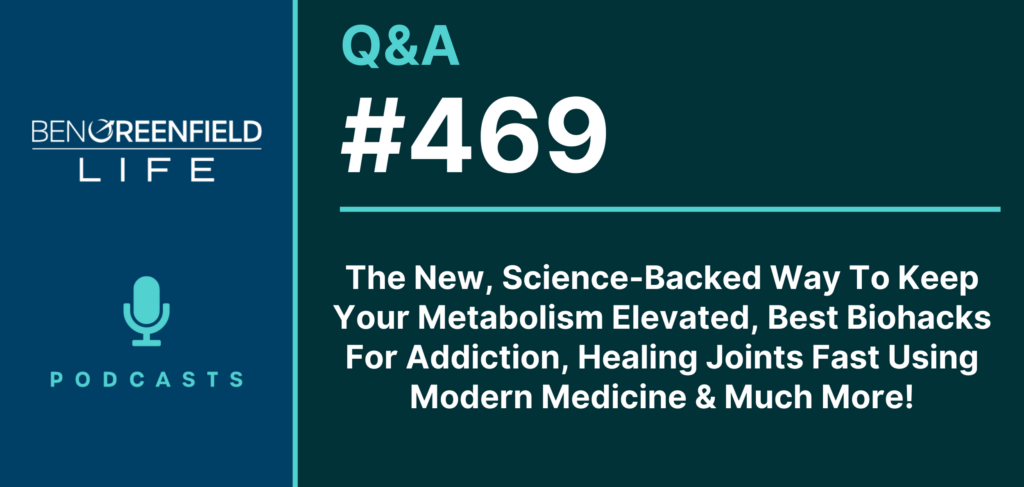August 4, 2020
Have you noticed that every other week a new diet seems to materialize, seemingly out of nowhere, in the health and wellness space; and most of the time, this “hot new diet” is nothing more than a rebrand of an existing, or previously failed, diet? Take Atkins and the keto diet for example—while not the same thing, they're remarkably similar and both centered around maintaining the fat-burning state of ketosis. Atkins has even done some clever rebranding recently and referred to itself as a “more flexible keto diet.”
Every now and then though, something completely new comes around that creates a ton of buzz, appears to offer drastic, never-before-seen results, and, of course, stirs up a lot of controversy.
One such diet—becoming increasingly popular among hard-charging, high-achieving athletes, CEOs, and biohackers—is the carnivore diet (perhaps a “less flexible keto diet”?). Joe Rogan has tried it and claimed that eating nothing but meat for 30 days gave him amazing energy levels, and… uhh… explosive diarrhea.
So what gives?
- Is the carnivore diet just another “fad” that's fated to wind up vilified, forgotten, and repurposed a few years later under a new name?
- Can we as human beings really sustain ourselves on nothing but meat and organs?
- What about vitamins and minerals from dark leafy greens and fiber from root vegetables?
- Aren't carbs necessary for athletic performance?
In today's article, I'll tackle all those questions and more. You’ll discover what exactly the carnivore diet is; why carnivore enthusiasts think humans aren't meant to eat plants; some interesting facts about how your body actually responds to plant compounds such as piperine, resveratrol, sulforaphane, and curcumin; the sustainability of the carnivore diet and how it would function globally; my personal take on this new meat-eating craze, and much more.
What Exactly Is The Carnivore Diet?
In a strict sense, it's just what it sounds like. If you're eating a carnivorous diet, just as carnivores out in the wild do, you're sustaining yourself solely by eating animals and drinking water. It falls into the same general category as the ketogenic diet since it is a very low carbohydrate protocol.
However, the carnivore diet is higher in protein and devoid of many of the common staples of a ketogenic diet, such as butter, coconut oil, seeds, nuts, plant-based oils, etc.—though some variations allow for animal-derived foods such as ghee, dairy, and eggs.
The carnivore diet is not just about eating classic cuts of meat like ribeye, New York strip, filet mignon, and flank steak. A well-constructed carnivore diet involves eating the entire animal, nose-to-tail, including classic cuts—but also the brains, liver, and heart, connective tissue, and intestines, as well as fish such as sardines, mackerel, herring, and anchovies.
It's worth mentioning that going carnivore doesn't necessarily mean that all you eat is meat. Eggs, ghee, and dairy are all acceptable in certain variations of the diet. You also might not necessarily need to cut out all plant foods. Humans are facultative carnivores, which means we can get all the nutrients we need, in their most bioavailable forms, from nose-to-tail carnivorous eating, but we can also digest plants in moderation. An obligate carnivore, on the other hand, would be a lion or a tiger, which can only eat meat—and if they eat plants, they get sick.
This is what Dr. Paul Saladino—a board-certified psychiatrist, certified functional medicine practitioner, and true expert on all things carnivore diet—refers to as the “carnivore-ish” diet, where about 80%-90% of the diet is comprised of muscle and organ meats and the rest of low-toxicity plants, which, incidentally, is pretty dang similar to my own “bastardized” version of the carnivore diet.
What's The Problem With Plants?
When I first interviewed Dr. Saladino on my podcast, we cooked up some grass-fed, grass-finished ribeyes from US Wellness Meats. I spiced my steak with cayenne pepper, sea salt, a rosemary-thyme spice blend, and black pepper for a dash of piperine to increase the bioavailability of different nutrients and compounds.
But when I went to season Paul’s, he said, “Wait, wait, wait. Hold the pepper on mine. I’m just going to do salt.” Why the heck did he not want me to put pepper on his steak?
I asked, and Paul responded by saying that plants are not really on earth to serve or feed humans. In fact, they develop a lot of potentially toxic compounds to discourage us from doing just that. Since plants can’t run, and they don’t have fangs or horns with which they can protect themselves, many produce endogenous insecticides and toxins to discourage animals (and people) from eating them.
The peppercorn, which is the seed of a plant, is the perfect example of this. Seeds are a plant's most important reproductive product because they will grow into other plants themselves, so many plants want to ensure that their seeds will survive and not get eaten. Others produce seeds that are actually indigestible to ensure they’ll pass through an animals’ digestive tracts unscathed.
As I mentioned earlier, piperine increases the absorption of certain antioxidants like curcumin, but it also works against your body’s own detoxification pathways. The enzyme UDP-glucuronosyltransferase makes certain compounds that your liver is trying to detoxify water-soluble so that your body can excrete them. Piperine inhibits this process, which is why it increases the absorption of compounds like curcumin. Your body doesn’t actually want curcumin in it, so as soon as you ingest it, it tries to get rid of it via detoxification, and piperine inhibits this process. This happens with other compounds as well, such as sulforaphane and resveratrol. Your body doesn’t actually absorb them all that well and rapidly metabolizes and excretes them.
As for the longevity-boosting effects of compounds like curcumin from turmeric, resveratrol from red wine, and sulforaphane from cruciferous vegetables, the truth is that they are not used directly by the body as you might think. Instead, they work primarily through a mild hormetic effect. Plant compounds, rather than being inserted into your biochemistry, exert a mild hormetic effect (causing it to adapt and become stronger, or more resilient, in response) on your body that works primarily by stimulating your own endogenous glutathione pathways, which is what causes the beneficial effects of these compounds.
For example, sulforaphane—which is derived from cruciferous veggies like broccoli and brussels sprouts and broccoli seeds—can induce the Nrf2 pathway to increase glutathione activity. However, the bad news is that sulforaphane is also known to be a goitrogen, meaning that as it circulates in the body before being excreted, it can actually compete with iodine absorption and induce hypothyroidism.
The good news is that you can get the same glutathione-stimulating benefits without plants. Mild hormetic stressors such as exercise, cold thermogenesis, sauna therapy, intermittent fasting, and O₂ restriction can also upregulate glutathione production. Not only that, but even exposure to low-dose radiation can induce a hormetic effect. Some rodents living near Chernobyl are actually displaying some amount of enhanced longevity.
Next, phytic acid and oxalates—which are found in seeds and nuts, leafy greens such as spinach, and root vegetables such as beets and sweet potatoes—can also be detrimental to your health because they act as digestive enzyme inhibitors. If you want to take a deeper dive into other vegetables, herbs, and spices that are commonly consumed in “healthy” diets but actually contain high levels of toxic compounds, I recommend checking out the following resources:
- Dr. Paul Saladino’s website
- The Carnivore Code by Dr. Saladino
- My podcasts with Dr. Saladino
- My podcast with Dr. Steven Gundry “The Truth About Lectins And The Plant Paradox By Dr. Steven Gundry”
- The Plant Paradox: The Hidden Dangers in “Healthy” Foods That Cause Disease and Weight Gain by Dr. Gundry.
I know some of what you just read may be a bit hard to swallow (pun intended), especially if you grew up hearing “eat your vegetables!” nearly every night at dinnertime. Now that you understand some of the problems with plants, let's dive into what makes meat a better alternative.
Carnivore Diet Benefits
Even if you're on board with everything you just read about the toxicity of plants, you probably still have some concerns with switching to a diet comprised primarily of meat.
Many of the concerns surrounding the carnivore diet or a carnivore-ish diet revolve around how it affects the gut microbiome, mTOR pathways, glutathione status, IGF, iodine, pH balance, and athletic performance.
So in this section, I'll cover each of those 6 points:
1. Gut Health
You’ve no doubt heard that fiber is necessary to support your gut flora and microbiome diversity. This commonplace got started with Dr. Denis Burkitt in the 20th century when he noticed that Tanzanians and Africans who ate a lot of fiber had significantly lower rates of colon cancer, constipation, bloating, and lower GI tract bleeding. But what we see in some modern clinical studies is actually the opposite. A couple of studies have been done where colonoscopies were performed on people and surveys taken from them regarding how much fiber they ate, and the people who ate the most fiber actually have the highest rates of colon cancer. People who eat high amounts of fiber also had the highest amounts of gas, bloating, and constipation.
Most of the bacteria-nourishing benefits of fiber are attributed to the production of short-chain fatty acids in the gut, most notably butyrate, which your gut bacteria use as fuel to maintain the integrity of the intestinal wall. While research has shown that an all-meat diet can lead to short-chain fatty acid (SCFA) deficits, it turns out that beta-hydroxybutyrate (BHB) ketones—which you would produce naturally if you ate a well-structured carnivore diet and incorporated daily intermittent fasting—simulates all of the effects of butyrate and SCFA on your gut flora without producing all the gas, bloating, constipation, and overall gut distress of highly fermentable soluble fiber and rough, gut-irritating insoluble fiber.
In other words, a well-formulated ketogenic or low-carbohydrate carnivore diet may provide many of the benefits of fiber, without a high carbohydrate intake and the associated unpleasant side effects that some people experience from high fiber intake.
In addition, an interesting study found that cheetahs are able to ferment collagen from bones and chicken cartilage into SCFAs, and the same may be possible for humans on a carnivore diet who make sure to include bone broth, bone marrow, and other cartilaginous sources (such as many of the newer bone broth powders with added cartilage) in their diet.
Dr. Saladino has eaten a carnivore diet for years and had a gut analysis done that revealed his gut flora ranks in the 85th to 90th percentile for diversity and quality. So if you want to improve your gut health, particularly if you struggle with lots of gas and bloating, consider cutting out dietary fiber and shifting into a ketotic carnivore diet that nourishes gut bacteria in a similar manner.
2. mTOR and IGF
mTOR stands for mammalian target of rapamycin. Rapamycin is an antibiotic, immunosuppressant drug that’s used primarily to coat coronary stents and prevent organ transplant rejection. Rapamycin inhibits the mTOR pathway, one of the pathways responsible for increased immune T and B cell activity. mTOR is also responsible for increases in DNA and cellular damage over time.
In the absence of rapamycin, it’s commonly believed that one of the best ways to suppress the mTOR pathway is to avoid excess protein and amino acid consumption. High protein consumption is believed to result in increased insulin growth factor 1 (IGF-1). IGF-1 binds to IGF-1 and insulin receptors in the body, which can trigger mTOR downstream.
What Dr. Saladino has seen in his own clients (and this is backed up by independent research) is that carnivores actually have lower levels of IGF-1 than people who eat a more omnivorous diet. The reason for this has to do with ketosis and the sirtuin family of genes since sirtuin pathways are involved in inhibiting mTOR activation. Sirtuin pathways are activated by caloric restriction and caloric restriction mimetics such as Ceylon cinnamon, bitter melon, curcumin, EGCG from green tea, and resveratrol.
So what does any of this have to do with the carnivore diet? Sirtuin pathways are also activated by BHB (found in ketone esters), which appears to have the same sirtuin-mediated benefits as caloric restriction.
3. Glutathione
Glutathione plays a critical role in shielding cells and cellular molecules from damaging oxidants and facilitates the excretion of toxins from cells. It even helps to regenerate other antioxidants like tocopherols, tocotrienols, and ascorbate to restore them back to their active, non-oxidized states.
There’s plenty of research that supports the effectiveness of plants (such as milk thistle, arugula, broccoli, cauliflower, kale, lentils, garbanzo beans, and spinach) in glutathione (Almsbio is my preferred source, and you can use code BENGREENFIELD10 to save 10%) support, but it turns out that one of the most important aspects of glutathione production in your body is adequate protein. Your protein intake should range from 0.5 to 0.8 g per pound of body weight, which equates to about 85 to 136 g per day for a healthy, 170-pound person. Liver and grass-fed beef are excellent sources of protein and also support methylation, a process that helps produce the raw material pieces that comprise the glutathione molecule.
4. Iodine
Iodine is not actually found in high amounts in most plants, save for sea vegetables like nori, kelp, kombu, and dulse. In fact, sulforaphane, the primary GSH-boosting compound found in cruciferous vegetables like broccoli and cabbage, is also known to be a goitrogen, which means that it can compete with iodine absorption and induce hypothyroidism depending on your baseline iodine levels.
Alternatively, meat and particularly fish like cod, pollock, and wild-caught salmon contain some of the highest amounts of iodine in the food pyramid, with Atlantic cod and pollock topping the charts.
5. pH Balance
Will a carnivore diet shift your body’s pH balance into an acidic state? The answer to this is yes…. if you don’t construct the diet properly. This is why it’s critically important to consume a nose-to-tail carnivore diet. Organs like liver and brains and broths derived from joint bones contain high amounts of the alkalizing minerals that are necessary to counteract the acidity-producing effects of a high-protein diet, like magnesium, iron, calcium, boron, potassium, and strontium.
In the absence of the above minerals from the diet, your body will pull them out of your own bones in order to restore pH balance. We don’t want to be deteriorating our own skeleton just so we can eat steak for breakfast, lunch, and dinner. Consuming plenty of high-quality bone broth will supply these minerals in sufficient doses to maintain a healthy pH balance.
6. Athletic Performance
While it might seem as if a meat-based diet that’s extremely low in starches and carbohydrates would reduce athletic performance, it’s a well-established fact that protein overfeeding actually results in a phenomenon known as gluconeogenesis, the transformation of proteins (and other non-carbohydrate carbon sources) into glucose in the absence of dietary glucose. This glucose is then used to fuel muscular and cardiovascular effort and replenish muscle and liver glycogen stores. Given that the carnivore diet is extremely high in protein and extremely low in, or devoid of carbohydrates, many athletes have employed the carnivore diet with no loss of strength or endurance capacity.
If you combine the carnivore diet with intermittent, 12- to 16-hour daily fasting, you’ll also enter into low-level states of ketosis on a daily basis. In fact, the famous “FASTER” study, which I was a part of, has shown that endurance athletes in a state of moderate ketosis (ketone levels between 0.5 and 0.8 millimolar) had similar amounts of muscle glycogen prior to exercise as the high-carb group, used it up at about the same rate during a 180-minute submaximal run at 64% VO2 max on a treadmill, and restored muscle glycogen levels the same eating their respective high-carb and low-carb meals.
My Take On The Carnivore Diet
While human beings can survive—and some may argue, even thrive—solely on a nose-to-tail carnivore diet, the more important question is whether it is a scalable, sustainable option.
My answer to that is: probably not. Without even discussing the problems with modern husbandry practices, such as the uses of antibiotics and growth hormones, we as humans have painted ourselves into a dietary corner.
The fruits and vegetables we eat today are “survival foods,” as Dr. Saladino calls them, stemming from the agricultural revolution that supports the current enormous global population. We have become dependent on at least a moderately plant-based diet, and we don’t have the land or resources to produce enough animals for everyone to eat a carnivore diet.
Furthermore, it is very rare to find a long-lived, healthy population that subsists entirely on meat, especially muscle meat. For example, several Asian, Latin American, and African tribal cultures actually consume the intestines of ruminant animals like goats, sheep, deer, and cows; but they all contain high amounts of the vegetables and fiber that those animals consumed—a literal stomach salad!
Many argue of the existence of carnivorous ancestral populations. While it’s true that many of our ancestors thrived on large quantities of animal products, every single one of the commonly cited carnivorous groups also took significant advantage of plant foods. For example:
- The nomads of Mongolia ate plenty of meat and dairy products, but consumed wild onions and garlic, tubers and roots, seeds, and berries.
- Gaucho Brazilians consumed mostly beef, but also supplemented their diet with yerba mate, a tea rich in vitamins, minerals, and phytonutrients.
- The Maasai, Rendille, and Samburu tribes of East Africa primarily consumed meat, milk, and blood, but also occasionally consumed herbs and tree barks. Women and older men in these communities consumed ample amounts of fruit, tubers, and honey.
- The Russian Arctic Chukotka thrived on fish, caribou, and marine animals but always paired these animal foods with local roots, leafy greens, berries, or seaweed.
- The Sioux of South Dakota ate large amounts of buffalo, but also consumed wild fruit, nuts, and seeds that they came across as they hunted the buffalo herds.
- The Canadian Inuit subsisted primarily on walrus, whale meat, seal, and fish, but also foraged wild berries, lichens, and sea vegetables and even fermented many of these plant foods as a preservation method.
In a nutshell, all things considered, if I were to eat a carnivore diet (and this has been my approach in the past when implementing such a diet), I would not only eat nose-to-tail, organ meats, bone marrow, and bone broth, but I would also add:
- Small amounts of root vegetables and tubers, along with pureed, mashed or canned pumpkin and sweet potato purees, preferably skipping the skin of these compounds and any excess fiber.
- Homemade fermented yogurt made from coconut milk and L. Reuteri strain probiotic.
- Raw, organic honey as a sweetener.
- Small, anti-oxidant rich, low sugar berries such as blueberries, lingonberries, bilberries, and blackberries.
- Bitter and tannin-rich teas and organic coffee.
- Dried, organic insects such as ants, crickets, grasshoppers, and caterpillars.
- Seeds and nuts, if tolerated by the gut and prepared via ancestral practices of soaking, fermenting, or sprouting
- Nutrient-dense vegetable powders that offer plenty of phytonutrients without excess roughage and fiber, such as Dr. Thomas Cowan’s heirloom vegetable powders (use code BEN to save 15%).
- 12-16 hour daily intermittent fast to ensure mTor pathways aren’t excessively activated.
- My friend Dr. Joseph Mercola’s “autophagy tea” recipe before my nightly fast to also limit mTor activation and increase autophagy (1 tsp Pau d’ Arco powdered tea, ½ tsp HCA/Garcinia powder, ½ tsp quercetin powder, ½ tsp glycine powder, ½ teaspoon chamomile powder), and Lakanto monk fruit sweetener to taste.
Including these foods also leaves room for something that's far more important than sculpting the perfect body or living at the pinnacle of health—the simple enjoyment of life. Starting my day off with a cup of organic coffee is a part of my morning ritual I'm not willing to give up. I’ll also continue to include seeds, nuts, and plants in my diet, my wife’s mouth-watering homemade sourdough, sweet potato fries and a glass of biodynamic wine with my ribeye for dinner, and all of my other favorite plant-derived foods—because they make me happy and because, well, they're friggin' delicious.
Summary
I've never really been a fan of recommending one specific diet for the general population. One of the chapters in my book Boundless, titled “F*@# Diets,” is based around the concept of biochemical diversity, which basically means that everyone will respond to different foods differently.
Some people are really sensitive to plants and roughage and excess amounts of fiber and would likely do better on a carnivore diet, but some people tolerate plants very well and can eat more omnivorously.
If you're interested in trying out the carnivore diet, pay attention to how your body performs on a daily basis and during exercise. If a strict carnivore diet works for you, maybe it’s something you stick with for the foreseeable future.
The most important piece of advice to remember from this article is the importance of the nose-to-tail approach: Organs and bone broths contain high amounts of alkalizing minerals and are necessary to counteract the acid-producing effects of a high-protein diet. Liver, in particular, is an excellent source of protein and also supports methylation, a process that helps produce the raw material pieces that comprise the glutathione molecule, and fish can help to keep your iodine levels elevated.
Including daily intermittent fasts to suppress your mTOR pathway, simulate all of the effects of butyrate and SCFA on your gut flora, and to keep your body in a low-level state of ketosis is also a good idea—as are caloric restriction mimetics such as Ceylon cinnamon, bitter melon, curcumin, EGCG from green tea, and resveratrol.
And if after all that, you're just not “feeling it,” remember, it’s totally fine to add in a few low-toxicity plants and plant-based drinks to improve your performance, dietary diversity, and general enjoyment of life.
To take a deeper dive into the carnivore diet, I recommend checking out Dr. Paul Saladino’s website and his book, The Carnivore Code: Unlocking the Secrets to Optimal Health by Returning to Our Ancestral Diet, as well as the following podcasts and articles on my site:
- The Truth About The Carnivore Diet: Everything You Need To Know About Dangers, Benefits, Mistakes & Hacks For Eating Only Meat.
- The Toxicity Of Plants, Carnivore For Athletes, Does Meat Cause Acidity, The “Game Changers” Debate & Much More With Dr. Paul Saladino.
- Ketosis vs. Carnivore Diet, Why Ketosis Isn’t For Everyone, & How To Do Ketosis & Carnivore “The Right Way”
- Carnivore Diet, Cleaning Out Your Colon, Eating Brains, Hunting Zebras & Much More With Paul Saladino.
Do you have questions, thoughts, or comments about the carnivore diet? Leave them below, and I will reply!














The carnivore diet to me represents how desperately sad we have become as a human race in the 21st century. There is so much confusion about diet, and all at the same time with the worst looking physical appearance and poor health in human history.
This diet and many others would never have developed if we simply remained intelligent species with a focus on our well being, without commercial enterprise and political interference.
I am 53, have 4 guinness world records on Swiss balls, i do about two major international shows a year. I am still going to continue as long as i can…and one of the reasons why i still can is due to the way i eat.
I disagree. The reason this diet came about in the first place, as far as I can tell, has to do with:
a) debunking the vegan and poor epidemiology hypotheses, the latter resulting in a dramatic increase in obesity in the developed world
b) people struggling with unfixable autoimmune issues that found near-miraculous relief on a highly restrictive diet.
The common platitudes of “balanced”, “well being”, haven’t really helped the situation, but undoubtedly it is the fault of foodstuffs corporations and the money involved are the primary cause of the western world’s obesity.
Yeah you are right Niel, but still in the end we have to choose a diet to stick to, i like this custom keto diet check it out, what do you think about it https://bit.ly/35hbwza
With heart disease being the #1 killer in America, I think anyone doing a Keto or Carnivore diet should be very diligent about testing LDL (with particle count and size).
Yes, bring on the debate ! Gregor, Hyman etc versus the carnivores!
If there were fewer CAFO operations in existence, I’d be more open to red meat and chicken consumption.
Are hormetic plants really toxic ? Maybe to a few allergic folks.
And with regard to the Horvath clock and telomeres, who wins ?
And athletic performance and fitness ?
I’m not convinced that ‘ head to tail ‘ meat on a daily basis is positive for health even after listening to Paul .. Of course, humans come in many different genetic formats, so that is an obvious confounding factor.
Hi Ben,
What I don’t understand is how eminent doctors can be so far apart on their beliefs. It would be great to hear what Dr. Michael Greger, Dr. Valter Longo, Dr. Neal Barnard would think of Dr. Saladino’s beliefs and research. However, from what I’ve read and researched about the Blue Zones, the one thing these longevity communities have in common is a low intake of carbs from grains and sugar and a minimal amount of meet or fish. That’s good enough for me, for now, not to follow a carnivore diet. I will keep up with any future developments though as I’m totally open minded as I don’t feel anyone has got this 100% nailed down yet.
Great work Ben, pushing human boundaries.
Matt
Hi Ben:
I strongly agree with this comment. How about having a balanced approach to reporting on different diets? I think this is the second time that you have featured Dr. Saladino, but I cannot recall you featuring any plant based proponents. Such proponents could be vegan proponents such as Dr. Greger or majority plant based proponents such as Dan Buettner. You don’t necessarily have to agree with these individuals and you may decide to challenge their perspectives.
I do appreciate Dr. Saladino’s theories even though I am a vegetarian. Since I consume many foods and supplements that may be hormetic, I often wonder if cumulatively they may have a negative effect..A simple solution might be to cut back on the high volume of sirtuin activating foods and drinks I consume and to skip or reduce some of the many phytochemical based supplements I take. Even though I spend a lot of time studying food, diets and supplements, the best approach continues to be a quandary.
Hi there Ben, I totally fell in love with your blog. All your contents are priceless. If you don’t mind, I would like sharing some tips regarding custom keto diet to every visitors here. Here’s is a link for free e-book that I found very good and useful to be practiced. Yes, it is free! Hope it is beneficiary for everyone. Much love. https://bit.ly/30y8zsB
File doesn’t exist. Do u have another link to this ebook?
From what I’ve read and heard, a diet high in meat produces Ash in your body that actually bogs down your organs. If one doesn’t consume meats that were raised organic aren’t they loaded with toxic chemicals you don’t want.?
Then there are elite athletes, other than yourself Ben, like Rich Roll who are Vegans?
Some additional elite athletes that are vegans or vegetarians
Novak Djokovic (Vegan) – #1 ranked tennis player in the world
Novak would be a good guest since Ben has an interest in tennis
Lewis Hamilton (Vegan) – #1 ranked in Formula 1 Race Car driving
Bode MIller (Vegetarian) – Olympic Gold Medalist downhill skiing
Edwin Moses (Vegan / Vegetarian) – Olympic gold medalist and world record holder 400M hurdles. I am not sure if he is Vegan or Vegetarian.
Carl Lewis (Vegan) – Olympic Gold Medalist. Two time Gold Medalist in the Long Jump.
Chris Campbell (Vegetarian) Olympic Bronze Medalist – Wrestling
Kendrick Farris (Vegan) – Only U.S. male to qualify for the 2016 Olympic games in weightlifting.
There are certainly many more. People do not realize that it’s possible to perform at a world class level in a variety of sports on plant based diets. Hence, the reason for creating a short list.
Compared to the total population of elite athletes, that is quite a small list. Even if it were 10x longer. No one diet works best for everyone.
You could probably assemble a similar-sized list of elite athletes that also smoke, but does that mean it’s optimal?
Some of these athletes u mentioned consumed dairy & some fish – e.g.. Moses Malone, Carl Lewis, etc….
Love Dr Saladino and his take on the carnivore diet..I was once fully migrated to strict carnivore due to health reasons and it resolved them but slowly incorporated back in other plant foods and realized we can in fact have plant foods as well that provide benefits and overall happiness…you hit the nail on the head with your approach..
I would love for you to moderate a debate between Dr. Saladino and Dr. Michael Gregor on one of you podcasts. Either you or Tim Ferris need to do that.
Also…I’d like to know who sponsored the “studies” you recover to about the Carnivore Diet.
I’m w you though, moderation for all things is key.
Keep up the good work!
Ps…I’m already on your email distribution.
I agree Mike, that would be awesome. Maybe get Dr. Valter Longo involved too! Maybe Rich Roll could instigate this with Ben and Vinnie Tortorich. Now that would be interesting!